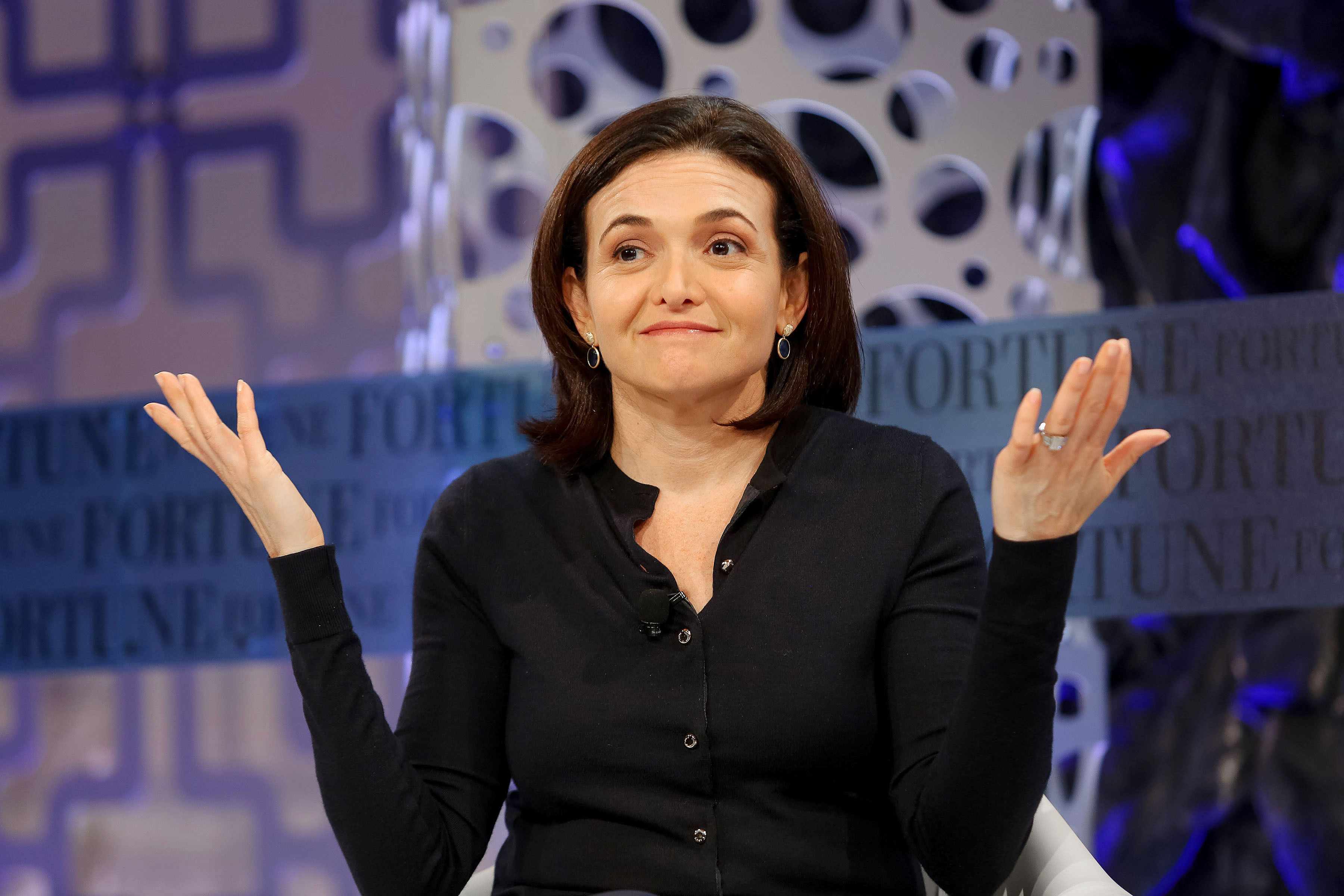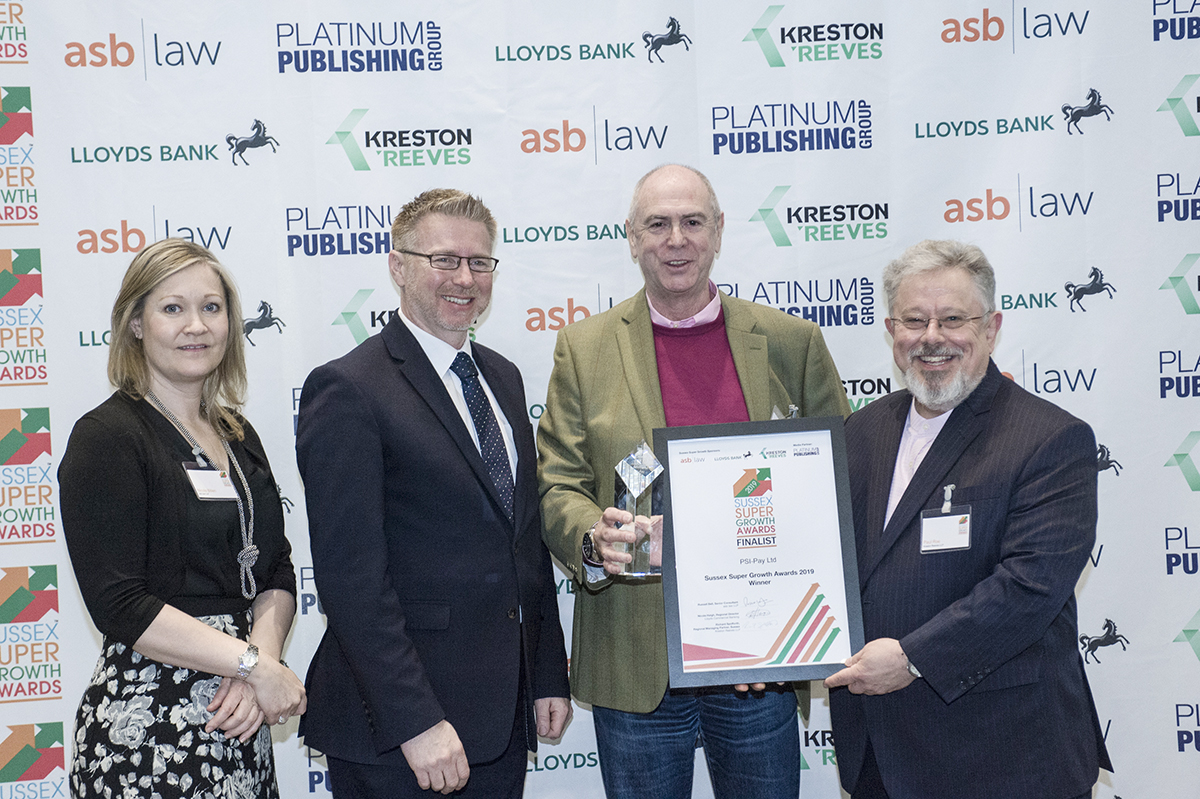
Sheryl Sandberg was the woman who had it all. Her high-flying career has included a stint as Chief of Staff for the United States Secretary of the Treasury, Vice President of Global Online Sales and Operations at Google and, since 2008, the Chief Operating Officer (COO) at Facebook.
She appears regularly in the top ten influential women lists, (in sixth place in Fortune’s 2018 ‘Most Powerful Women in Business’), is a global business celebrity and a best-selling author (over four million copies worldwide).
Being so successful perhaps it was inevitable that people would want her to fail.
She had predicted her fate in her own best-selling book. Lean In – Women, Work And The Will To Lead was lauded as a femininist manifesto. It spells out how the odds are stacked against women in business, and how the status quo can be challenged. But, she warned, for a woman, being a success and being liked can often be mutually exclusive. She has discovered how true this is.
Facebook’s fall from grace
As Mark Zuckerberg’s number two at Facebook, the incoming flak was inevitable. In a very short space of time, the reputation of Facebook has been shattered; from a tech wonder to a company tainted by accusations of data abuse and election interference.
In March 2018, the Guardian and the New York Times exposed the devastating Cambridge Analytica scandal. The data analytics firm that worked with Donald Trump’s election team and the Brexit campaign harvested millions of Facebook profiles of voters, in one of the tech giant’s biggest ever data breaches, and used them to build a powerful software program to predict and influence choices at the ballot box.
The extent of Russian interference in the election of Trump via Facebook and Instagram (owned by Facebook) was also revealed. Evidence presented to a Senate committee revealed that material generated by the Kremlin had reached a 126 million American Facebook users.
The benign impact of Facebook across the globe was highlighted with the platform being blamed for spreading anti-Muslim material in Sri Lanka.
On March 12th 2018, UN investigators condemned Facebook for playing a major role in fomenting a possible genocide against the Rohingya minority in Myanmar. The UN Myanmar investigator Yanghee Lee said, “I’m afraid that Facebook has now turned into a beast.”
Later in the year, the founders of Instagram quit the business and more data breaches were discovered. The share price plummeted.
The crime sheet
Facebook opened the door to the potential malicious activity in April 2010 when it launched a platform called Open Graph which allowed external developers to reach out to Facebook users and request permission to access a large chunk of their personal data and crucially, to access their Facebook friends' personal data too. Facebook implemented restrictions on this in 2014, but the damage had already been done. It is estimated that Cambridge Analytica had access to 87 million Facebook profiles, from which they identified the profiles to target campaigns such as "Defeat Crooked Hilary”.
Is Facebook culpable for the actions of external forces? What cannot be denied is Facebook acted unacceptably in its efforts to control the bad PR which came its way.
Facebook went on the attack against its critics. Sandberg is thought to be instrumental in hiring rightwing attack dogs, Definers Public Affairs, which acts to negatively influence the public image of individuals, firms, candidates and organisations who oppose their clients. One target was George Soros, the billionaire who criticised the company at the World Economic Forum in Davos. Sandberg personally sent an email asking if Mr. Soros had shorted Facebook’s stock suspecting Soros had a financial incentive to see the company’s share price decline. Facebook investigated into his holdings and trading activity.
Rather than answer the critics, Sandberg and Facebook spent far too much emphasis on trying to discredit them.
Sandberg in the frame
With such a charge sheet, it could be said that Sandberg deserved all the criticism and barbs that came her way, but she was getting more than her fair share? The most vicious attacks were not aimed at the big boss, Mark Zuckerberg; they were targeted at Sheryl Sandberg.
Lianna Brinded, Head of Finance at Yahoo UK, noted that, “Facebook’s Sheryl Sandberg has been at the epicentre of ire for people looking to blame someone for the platform’s raft of scandals… even though she’s the Chief Operating Officer, not the boss of the entire group. The focus on Sandberg is part and parcel of a real-world phenomenon called the ‘glass cliff’ (see below).”
Kathryn Kolbert of the Athena Centre for Leadership Studies wrote in a similar vein: “There’s little doubt the company is facing critical challenges and has made some egregious mistakes. The fact that Sandberg was brought in to be the ‘adult in the room’ does not absolve Zuckerberg of responsibility.
“Mark Zuckerberg is the CEO of a multibillion-dollar company, and he’s been at it a while. He’s a grown-up. He ought to be responsible. But from what I see, there isn’t the sense that both should be accountable.”
The BBC’s Natalie Sherman concurred: “Mr Zuckerberg's status as founder and controlling shareholder has offered him a measure of protection. The public long ago wrote him off as a robot, characterised by an uncomfortable amalgam of confidence and awkwardness.
“In some ways, the anger directed at Ms Sandberg represents a familiar story. Repeated academic studies have shown that firms are more likely to install female leaders at times of crisis - a phenomenon known in academic world as the ‘glass cliff’.
“And ultimately, many of those women end up taking the fall for problems. Female leaders are also subjected to personal attacks of a sort that men like Mr Zuckerberg tend to escape. In this case, media accounts, quoting anonymous employees, have provided detailed studies of Ms Sandberg's leadership flaws, faulting her for things like creating a clique-y environment hostile to negative feedback.”
Christy Glass, a professor at Utah State University, notes, “This is very much consistent with the kind of blame and scrutiny that women corporate leaders receive when they are managing their companies through crisis.”
The warning comes true
Sheryl Sandberg could hardly have been surprised about the negativity coming her way. Her seminal book Lean In, warned women just what to expect.
In her chapter entitled ‘Success and Likeability’ she cited the Harvard Business School research undertaken by Professors Flynn and Anderson in 2003. They told business students the real-life story of Heidi Roizen who became a successful venture capitalist by using her outgoing personality and vast network which included the most powerful business leaders in the technology sector. Except for half of the students they changed Heidi’s name to Howard.
Asked for their perceptions, the students saw Howard as being appealing, yet Heidi was seen as selfish and not the sort of person you would want to hire or work for. Sheryl has discovered that she is seen as a Heidi not a Howard.
When she joined Facebook, her role was to generate income from a popular yet unprofitable brand. She was dubbed the ‘adult in the room’ due to her age and inexperience, which contrasted with the young geeks in residence.
Being the adult bestowed responsibility upon Sandberg’s shoulders. It was to become a burden that few could have coped with.
When Wired writer Virginia Heffernan attended a Lean In dinner in 2012, she worried about the overwhelming challenge facing Sandberg: “In person Sandberg is dazzling. I don’t think I’ve ever met a better host. At a table of decidedly anti-corporate women, Sandberg engaged, and seemed to win over, everyone.
“But from the first minute I saw her in person in 2012 I was very, very concerned about Facebook. It dawned on me that Sandberg was human — a small, vain, bright, self-absorbed, convivial everywoman with a talent for money and fame — and that no one human, even Sandberg, could discipline the galactic, epochal spiritual wildfire that Mark Zuckerberg had inflicted on the Internet… The moral responsibility of its leaders is crushing.
“No wonder Sheryl Sandberg has failed so spectacularly as an Empress. Everyone fails in that role. As just one human, she has been unable to assume or even approximate imperial responsibility that would have eluded Genghis Khan.”
Leaning in – and getting smacked
Lean In is a call for women to be ambitious and believe in themselves. Sandberg writes: “All through my life, culturally reinforced signals cautioned me against being branded as too smart or too successful. It starts young. As a girl, you know that being smart is good in lots of ways, but it doesn’t make you particularly popular or attractive to boys. In school, I was called the ‘smartest girl in the class’. I hated that description. Who wants to go to prom with the smartest girl in the class?”
Sandberg admits that the desire to mute achievements in order to be liked has followed her in her career. And if one of the most successful businesswomen in the world feels like this, what chance do other women in business have?
Inevitably, just by writing a book such as Lean In, makes her the smartest girl all over again - and who likes a smart girl. Apparently many don’t.
The failings of Facebook have led many to revisit Lean In, and twist the knife.
In December, Michelle Obama said in an interview that, “It’s not always enough to lean in because that shit doesn’t work all the time.”
Last year, a group of Duke University psychology professors suggested that the mantra of ‘lean in’ might prompt people to view women not only as the solution to the problem, but also as the cause of it.
Nathalie Molina Niño, author of Leapfrog: The New Revolution for Women Entrepreneurs, declared that Lean In missed the mark because it failed to reflect the experience of most women who are balancing work and family: “It’s applicable only to women in the corporate world and that’s a fairly small, marginal group in contrast to what is true for most women.”
The Guardian’s Arwa Mahdawi went further, “We need to push back against corporate feminism. Capitalism has coopted feminism and turned it into a way for privileged women to advance their careers and sell books. Having more women in powerful positions means nothing if all they’re doing is leaning into exploitative capitalist conventions. Sandberg is a very clear example of that.”
Some of the criticisms of Sandberg’s Lean In are valid yet also feel unfair. If you are looking for an all-encompassing solution to gender inequality then this isn’t the book – but does any book answer all the questions? In any case she never claimed her book had all the answer, quite the opposite in fact.
The book is essentially about women challenging the internal barriers that prevent them achieving their full potential. She firmly asserts that institutional barriers exist that act against women and she supports those women who battle these. There are plenty of books on sexism in the workplace. Sandberg argues that both barriers have to be addressed– Lean In focuses on one side of the battle.
In the introduction, she admits that parts of the book will be most relevant to women fortunate enough to have choices. After the sudden and shocking death of her husband in 2015, she reflected “When I wrote Lean In, some people argued that I did not spend enough time writing about the difficulties women face when they don’t have a partner. They were right.”
But it is still an inspiring book and a valuable addition to the debate on gender equality. Sandberg personifies the struggles that women face. She has made mistakes and the decision to discredit opponents of Facebook is impossible to defend. What matters now is how she and her fellow Facebook leaders respond to the challenge of making the platform a force for good, banishing those who spread hate and preventing the abuse of its power for political or financial gain.
The appointment of Nick Clegg as Head of global policy and communications may help. In Britain, he is discredited as the politician who back-tracked on tuition fees, but he will be working to make the business more accountable.
For Sandberg, she will have to live with the fact that being successful may come at a cost for a woman. As the Telegraph’s Olivia Rudgard summises: “Women are concluding that leaning in is all very well, but employers are still not meeting them halfway. And Sheryl Sandberg may be learning that while you can lean in all you want, the world will still treat you like a woman.”
Although many commentators have cited Sandberg as an example of a women one the edge of a glass cliff, it is not strictly true as Facebook was hardly struggling when she joined. But after receiving so much vitriol it would be understandable if she feels like she has been thrown off a cliff, glass or otherwise.
What is a 'glass cliff'?
The glass cliff is the phenomenon of women being appointed to leadership roles, such as corporate executives or election candidates during periods of crisis or downturn, when the chance of failure is highest.
The term was first coined by University of Exeter researchers Michelle Ryan and Alexander Haslam in 2005. In 2003, The Times ran a feature suggesting that women leaders have a negative impact on company performance. Ryan and Haslam looked at the what happened at FTSE 100 firms before and after men and women board members were brought onboard.
They found that those firms that brought women to their boards were likelier to have experienced a consistently bad performance in the preceding five months.
Emily Stewart writing for vox.com, writes, “Women are elevated to positions of power when things are going poorly. When they reach the upper ranks of power, they’re put into precarious positions and therefore have a higher likelihood of failure, meaning there’s a greater risk for them to fall.
“When the going gets rough, organisations look for a change of pace and often believe they find it in someone who isn’t their typical executive — in other words, someone who isn’t a white man.”
Anna Beninger, at Catalyst, a nonprofit focused on promoting women in business says: “When an organisation is in crisis, women are often seen as being able to come in and take care of a problem. They’re effectively handed the mess to clean up.”
“Sometimes these situations work out, and the women put in charge are successful in orchestrating a turnaround and righting the ship. Often, however, they don’t.”
In research for the Harvard Business Review, Susanne Bruckmüller and Nyla R. Branscombe conducted an experiment where college students were asked to choose between two equally qualified candidates for CEO of a fictional company, one male and one female.
They found that, “when the company had been led by men and was doing well, 62% of the students chose the male candidate. But when the male-led company was in crisis, 69% chose the female candidate.
“One thing these results reveal, we believe, is a status quo bias. As long as a company headed by men performs well, there’s no perceived need to change its pattern of male leadership. Only if male leaders have manoeuvered an organisation into trouble is a switch to a female leader preferred.”
Sheryl Sandberg timeline
• Born in on August 28th 1969 in Washington, D.C., she studied Economics at Harvard University in Cambridge, Massachusetts. She did her undergraduate thesis with economist Lawrence Summers, who later became the Chief Economist at the World Bank. He appointed Sandberg in 1991 and they worked on projects that helped developing countries for the next two years.
• Sandberg received a Master’s in Business Administration from Harvard in 1995. Summers became deputy secretary of the Treasury in 1995 and Sandberg joined him as his chief of staff in 1996.
• In 2001 Sandberg joined the Google and soon became Vice President of Global Online Sales and Operations, as well as Google’s philanthropy arm, Google.org, which focused on the problems of climate change, public health, and poverty.
• Sandberg was recruited as Facebook’s first COO in 2008, with the remit of creating an advertising strategy for Facebook that allowed the company to finally become profitable.
• She published ‘Lean In: Women, Work, and the Will to Lead’ (2013) and launched Lean In, an education and community-building organisation for women in business.
• In 2015 Sandberg’s husband, Dave Goldberg, died suddenly when on a treadmill whilst on holiday in Mexico. She wrote about his death and coping with grief in ‘Option B: Facing Adversity, Building Resilience, and Finding Joy’ (2017).








